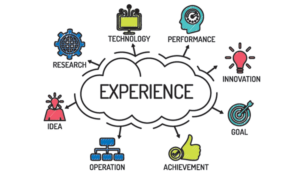Dick Bourke shares his thoughts on how to improve the customer experience, discussing the impact of advisors, quality management and technology.
The Customer Experience (CX) has become mainly focused on creating a reputable and memorable brand, and this especially applies to call centres where the CX is the primary asset.
Findings from a study recently published by Garner highlight the increasing demand for chief marketing officers to improve the CX throughout all touchpoints. And due to increasing use of customer call centres, this industry is undergoing extreme pressure to improve their services and deliver enhanced customer experiences.
Whether it’s the first point of contact or the tenth, customer service moulds the entire CX, making it vital to implement solutions that exceed the customer’s expectations throughout all parts of the buyer’s journey. Results from a HyperQuality study show that improving the CX in a call centre can boost return on investment (ROI) by more than $100,000.
Here is a go-to guide for improving the CX in your call centre. In addition to tips, you’ll find helpful steps for implementing these tips into your current practice.
It Starts With Your Employees
Customers are your most valuable asset, and although your attention should be directed toward them at all times, you can’t forget about the very people who come into contact with your customers on a daily basis – your agents.
Everyone has a bad day from time to time, but if employees are constantly unhappy with their work environment, this is likely to translate into a poor tone with customers. And no one likes speaking with an agent who is in a bad mood and is making snappy remarks.
Research indicates that when a customer is speaking with a representative, the message is influenced and interpreted in part by the tone in which it is given. In fact, 38% of the way the message is interpreted is influenced by the tone in which it is spoken. Other factors influencing the way the message is received include body language and facial expressions.
Call centre agents don’t get the luxury of being able to communicate through body language and facial expressions, however, meaning it is their tone that represents 100% of the way the message is received, making it all the more important to keep them happy.
Without high levels of employee satisfaction, the CX is going to suffer. Think of it like this, “Satisfied Employee, Satisfied Customer.”
How Do You Keep Your Employees Happy?
It starts with superior leadership. More importantly, it starts with setting good examples. Your company’s supervisors and managers must know how to lead by example. When they go out of their way to ensure employees are being provided with all the necessary resources to adequately fulfil their duties, employees will, in turn, go out of their way to ensure customers are getting their needs met.
You can also ask your agents the following questions to make sure everyone is on the same page with regard to what is expected of them. Studies have shown when employees know what is expected of them, it increases job satisfaction and improves the CX. These questions also outline how the call centre can improve its interactions with its agents.
- Do I know what is expected of me?
- Am I being provided with the proper equipment and resources to fulfil my job duties?
- Am I satisfied with the performance of my co-workers?
- Do I feel as if I’m making a difference?
- Is the mission of my company helping society?
- When was the last time someone recognised me for my progress?
- When was the last time someone informed me of my mistakes?
Asking agents the questions above engages employees. It conveys that they are cared for and valued, and research indicates that when employees feel valued, they provide higher levels of productivity and enhanced levels of customer service, both of which result in a better CX.
Implement Customer Experience Management
Over the years, Customer Relationship Management (CRM) software has been used by call centres to evaluate customer experiences. Recently, though, key benefits have been noted by those using Customer Experience Management (CEM), which aims to analyse customer interactions to see where improvements can and should be made.
Unlike CRM, CEM captures feedback from customers who have recently made contact with your call centre. It analyses satisfaction scores to ensure customers are receiving top-notch customer service, and because the feedback is captured in a timely manner, it allows for issues to be addressed promptly and efficiently. The most notable difference between CRM and CEM is that CEM monitors a call centre’s value to the customer, whereas CRM monitors the customer’s value to the call centre.
Through the implementation of CEM into your overall operations, you gain the ability to develop custom-tailored strategies that solve the precise problems your call centre is facing. Before integrating CEM, though, it is essential to consider the uniqueness of your call centre. Pinpointing how you differ from other call centres enables you to create those custom-tailored strategies we just mentioned. And it will also help ensure the integration of CEM with your contact centre software takes place smoothly and efficiently.
Enforce Strict Adherence to Schedules
Call centres are notorious for letting agents come and go as they please, simply passing on the incoming calls to the next available representative. This, unfortunately, reduces customer satisfaction by increasing wait time and hindering first-class service levels.
When call centre employees have a thorough understanding of the importance of following a schedule, they will feel more compelled to follow one. This is why enforcing strict adherence to schedules from the agent’s very first day of onboarding is of the utmost importance. Not only does it streamline shift changes, but it improves both employee and customer experiences.
Follow Minimum On-Hold Guidelines
Call centres specialise in communicating with customers over the phone. It is because of this that customers have high expectations in regard to getting their needs met in a timely manner and without having to be put on hold. They fail to see call centres as an organisation with varying departments, and when they are put on hold they don’t understand their calls are actually being handled in the most timely manner possible.
And even though call centres specialise in expediting customer calls, additional steps should be implemented to ensure hold times are minimised to the least amount of time possible; this will maximise customer satisfaction levels, which leads to a memorable and positive CX.
All call centres, regardless of the industry they specialise in, can use the following five tips to minimise on-hold times:
- Make sure all customers are provided with the opportunity to receive a call-back instead of being put on hold
- Expand employees’ authority to make decisions
- Use real-time databases for updating customer information
- Avoid training employees with real customers
- Expedite internal departments response times
Enhance Call Centre Quality Assurance With a Scorecard System
Performance from your agents is key to the CX. Over the years, we have seen time and time again how revolutionary the balanced scorecard system has been in improving agent performance. The concept was first introduced in 1992 and has since simplified performance metrics.
Many call centres view agent scorecards as tedious, but the truth of the matter is that scorecards enhance quality assurance by using qualitative and quantitative data to pinpoint deficits in agent performance. The scorecards enable managers to acquire a comprehensive understanding of each agent’s proficiencies and shortcomings, allowing tailored training to be provided to each agent on an as-needed basis.
Take this scenario as an example: the scorecards provide a manager with valuable insight regarding a specific agent who fails to meet customers’ expectations when taking calls relating to refunds. In all other areas, however, the agent exceeds customers’ expectations.
Knowing this information, the manager can direct the agent toward training tools that specifically aim to improve the ability to handle calls that have a focus on customer refunds. This not only improves the performance of agents, but it also enriches the CX.
How is your CX measuring up?
Author: Robyn Coppell
Published On: 7th Aug 2018 - Last modified: 25th Feb 2022
Read more about - Hints and Tips, Scorebuddy
















